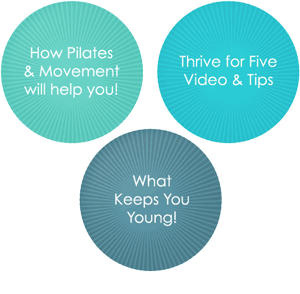Enter any Pilates studio while a class is taking place, and you should suddenly feel like you are being shushed by many librarians as you hear a collective and powerful “shhhhh!” Pilates instructors are known for being awfully bossy when it comes to breathing, a habit most people do without much thought. Please don’t be scared away by our exactitude on this matter. It is for good reason, which you hopefully will appreciate on an even deeper level from now on!
The second of the nine principles of Pilates is Breathing, following only Core. Clearly this aspect of the Pilates repertoire is very important. The core consists of 4 sets of muscles that together create a cage of strength in the center of the body, and the top of the cage of strength is the diaphragm! Your core training will be incomplete, one quarter short to be exact, if you do not include the training of your diaphragm and breath.
The diaphragm is the divider between your thoracic and abdominal cavities, and it connects to your ribs, which connect to your spine. Therefore a healthy and well-trained diaphragm will have a positive effect on your lungs, your core, and your spine. What multi-tasking! Don’t become discouraged if it is difficult to master such directed breathing. Keep practicing, and remember Pilates is about “Progress, not Perfection!” Here are few anatomy-based reasons to motivate you to persevere in your practice of the Pilates breath.
Inhalation
When we breathe in, our diaphragm presses down into the abdominal cavity, making room for the lungs and the ribcage to expand. When our ribcage expands, our thoracic spine extends and finds greater length, creating better posture. We can magnify these great results through directed breathing and specific contractions. Let’s try it:
Breathe in without directing the breath anywhere or stabilizing your abdominals. Most likely, your stomach expanded and the front of your ribcage, just beneath the breast bone, flared open. Now breathe in again, but this time stabilize your abdominal muscles. To do so, imagine you are wearing a corset or those giant weight-lifting belts (choose whichever image you most identify with!). Additionally, direct the breath to fill the back and sides of the ribcage instead of the front. With a contracted abdomen, your diaphragm does not push down as much, so it expands the ribcage and extends the thoracic spine to an even greater degree! By breathing in so deeply that we expand the bottom of the ribcage, we are making sure that we are breathing into the deep parts of our lungs, improving the function and capacity of our lungs as well as that of the thoracic spine.
Exhalation
Pilates utilizes a forced exhalation, which means that we engage abdominal and other muscles to push the air out of our lungs. Therefore, we generally exhale during the exertion and contraction portion of an exercise to facilitate a deeper contraction of your deep abdominal muscles. For example, we exhale to curl up, and inhale to return to the mat. Repeat the breathing exercise described above, but this time during every exhale try to contract your core muscles even more to make the waist smaller every time. Imagine you are squeezing the air out of your lungs by cinching the waistline.
Different Pilates instructors utilize different forced breaths, such as the “chhh” breath, which tightens the jaw slightly more than the “shhh” breath. Then there is the “haaaa” breath, as if you are fogging up a mirror. This breath relaxes the jaw. Almost any Pilates instructor will agree that it is more important that you breathe than how you breathe, so we will work to find the breath that best works for you. Additionally, we reserve the right to change the type of breath as well as the inhale/exhale pattern according to the exercise, our focus for the day, and your particular needs. So go with the flow, closely following the breathing cues of your instructor to gain the most out of each movement.
Remember, the breathing pattern in Pilates is to facilitate the movement. Don’t focus on the breath so much that you lose the movement. Give equal attention to both and with practice and time, both elements will improve and become more natural. The benefits to directed breathing are endless. It will engage the “rest and digest” function of the body rather than the “fight or flight” function of the body, allowing you to relax and decompress (that is why you will often find yourself yawning during your session). It will also bring more oxygen to the muscles and improve circulation, which will help the body remove impurities. No wonder Joseph Pilates called proper breathing the “internal shower” of the body!

